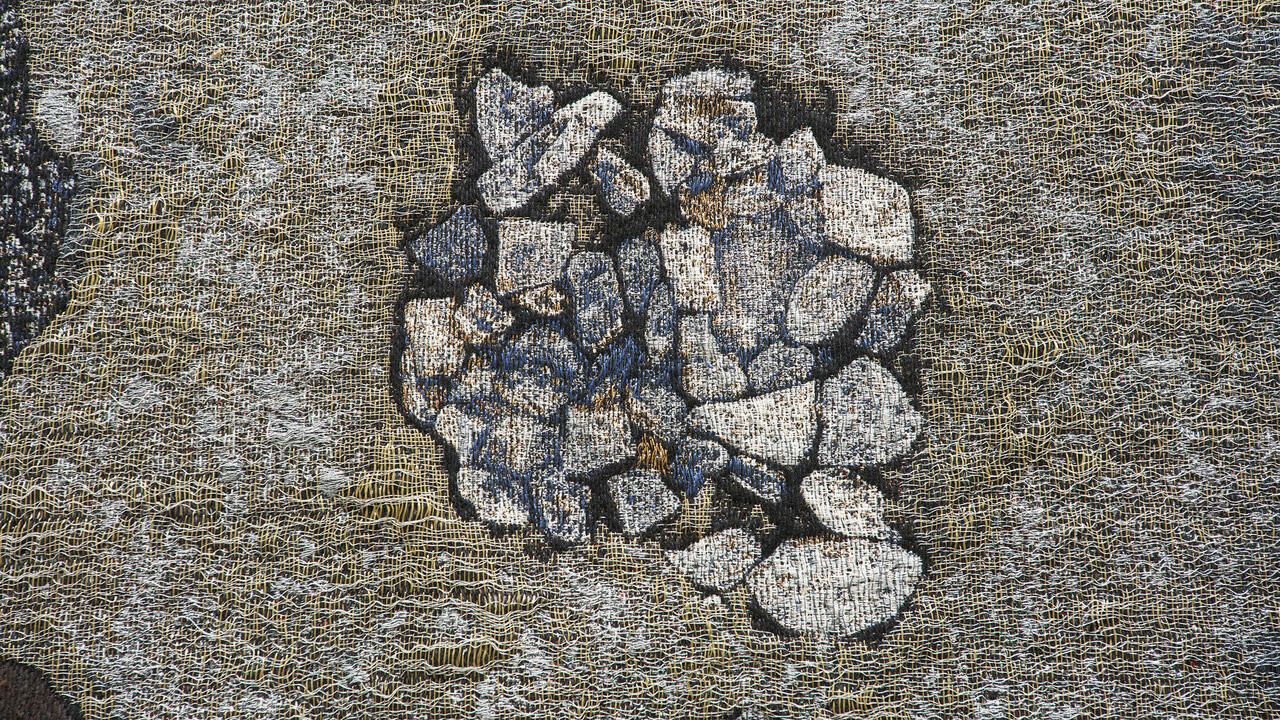André Butzer
Guido W. Baudach
Guido W. Baudach

One of the false notes of recent German painting has been a presumption of innocence which recalls how painters of the early 1980s brashly proclaimed their obliviousness to there having ever have been a problem with churning out large-scale expressionistic figurative paintings. André Butzer has often appeared to conform to this conservatism even as he parodies its naiveties. His guise as a brilliant but infantile painter-cum-cartoonist was always qualified by murky historical echoes and by his method of co-opting Conceptualisms recourse to peripheral information in order to invest his blithe gestures with historical references.
This show, however, was unequivocally knowing and reflected the non-hierarchical twin-stream approach that has characterised Butzers work of the past two or three years: his production of skeletal geometries on flat grey grounds in conjunction with full-colour painterly abstractions. At the same time, the exhibition represented the primacy of this form of bifurcation within Postmodernist painting since the 1980s, from Gerhard Richter (photo painting/abstraction) to Günther Förg (photography/gestural abstraction) to Christopher Wool (text painting/decorative silkscreen). In Baudachs generic rectangular gallery in Charlottenburg, there were only two upright rectangular paintings, which are relatively small for Butzer, the larger measuring just under two metres in height, the smaller 140 cm. Both are oil on canvas, but they follow diametrically opposed remits. Château Pettersson und Findus (Château Pettersson and Findus, 201011) consists of a single layer of grey on raw linen over which two black rectangles have been painted freehand. Butzers cartoonist facility has been redirected from sketching out floppy-eared citizens to mocking up signs for modernistic formalism, such as the conflation of abstract shape with architectural layout. Those dovetailed black rectangles suggest floor plans and site-specificity, but the title which refers to the fictional characters Pettersson and his cat Findus in the Swedish childrens books by Sven Nordqvist emphasizes that we are in a realm of quirky symbolism in which normal gravitational rules of historical causality do not apply.

The smaller Untitled (2011) its smears and blotches of brightly coloured impasto oozing across a white-primed ground explodes the grey paintings reticence with a show of vulgarity. Conceptualization cedes back to the action that it superseded. Haunted by the absent figure, the prominent loops of red and blue squeezed straight from the tube echo outspread arms or wide eyes. The awkward handling is disingenuous in the context of a whole that is so unashamedly lush and luscious. Butzer seduces you while telling you he is unable to. In the glare of the gallerys neon lighting, the DayGlo paint is unsettlingly vivid, a variegated surface reeking of still-partly-wet oil. Like a wild animal trapped in the elegantly minimalistic gallery, Untitled mocks its neighbours presumed authority and cerebrality; in turn, Château Pettersson und Findus condescends to the smaller paintings temerity. Butzers risk is to assert against the insistent foil of the larger grey paintings doubt that this performative gestural painting is still do-able and not merely a sign of a blinkered artist persisting, out of a vain or even autistic necessity, with an idiom beyond the point at which it has become no more than a nostalgic commodity, a dumb painters effusions. And yet the dichotomy between the two paintings proves to be as supportive as it is antagonistic. The proximity of the grey painting renders _Untitled_s metaphysical energies relativistic: one point on an axis of possibilities, one half of a binary holding irony and innocence in perpetual equilibrium.
















